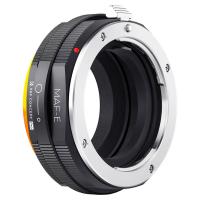What Is The Stage For On A Microscope?
The stage on a microscope is the platform where the specimen being observed is placed. It is usually equipped with clips or a mechanical stage to hold the specimen in place and allow for precise movement and positioning. The stage is an essential component of the microscope, as it enables the user to manipulate the specimen for observation and analysis under the lenses.
1、 Purpose of the stage

The stage on a microscope is a platform where the specimen being observed is placed. It serves as a support for the specimen and allows for precise positioning and manipulation to ensure accurate observation. The stage typically includes mechanical controls that enable the user to move the specimen in both the X and Y axes, as well as adjust its position along the Z axis. This allows for detailed examination of different parts of the specimen and facilitates focusing and imaging.
The purpose of the stage is to provide stability and control during the observation process, ensuring that the specimen remains in the field of view and can be examined from various angles and depths. Additionally, the stage often includes clips or holders to secure the specimen in place, preventing movement or displacement during observation.
From a modern perspective, the stage on a microscope has evolved to incorporate advanced features such as motorized controls, computerized automation, and compatibility with digital imaging systems. These advancements have enhanced the precision and efficiency of specimen manipulation and observation, allowing for more detailed and accurate analysis.
In summary, the stage on a microscope plays a crucial role in facilitating the precise positioning and observation of specimens, and its design continues to evolve to meet the demands of modern microscopy techniques.
2、 Types of microscope stages

The stage on a microscope is a platform where the specimen being observed is placed. It serves as a support for the specimen and allows for precise positioning and manipulation to ensure accurate observation. The stage typically includes mechanical controls for moving the specimen in both the X and Y axes, as well as knobs for adjusting the focus and depth of field.
There are several types of microscope stages, each designed to accommodate different types of specimens and observation techniques. These include fixed stages, mechanical stages, and motorized stages. Fixed stages are stationary and are best suited for simple observation of flat, non-moving specimens. Mechanical stages allow for more precise control and movement of the specimen, making them ideal for examining larger or more complex samples. Motorized stages take precision to the next level by allowing for automated movement and positioning of the specimen, often controlled by computer software.
In recent years, there has been a growing trend towards integrating digital imaging and analysis capabilities into microscope stages. This allows for real-time image capture, analysis, and manipulation of the specimen, opening up new possibilities for research and diagnostics. Additionally, advancements in stage design have focused on improving stability, precision, and compatibility with various imaging techniques, such as fluorescence and confocal microscopy.
Overall, the stage on a microscope plays a crucial role in facilitating accurate and detailed observation of specimens, and ongoing developments continue to enhance its capabilities for a wide range of scientific and medical applications.
3、 Adjusting the stage

The stage on a microscope is a platform where the specimen being observed is placed. It is an essential component of the microscope as it holds the specimen in place and allows for precise positioning and focusing. The stage typically has clips or a mechanical stage control to secure the specimen and move it in different directions for optimal viewing.
When adjusting the stage on a microscope, the primary goal is to position the specimen in the field of view and bring it into focus. This is achieved by using the stage controls to move the specimen horizontally and vertically, ensuring that the area of interest is centered and in focus under the objective lens. Proper adjustment of the stage is crucial for obtaining clear and detailed images of the specimen.
From a modern perspective, the stage on advanced microscopes may also include motorized controls for automated scanning and imaging of multiple areas of the specimen. This allows for efficient and precise examination of the specimen, particularly in research and clinical settings where high-throughput analysis is required.
In summary, the stage on a microscope serves as the platform for holding and positioning the specimen, and adjusting the stage is essential for achieving optimal focus and clarity in microscopic observations. With advancements in technology, the stage has evolved to include automated features for enhanced efficiency and accuracy in specimen examination.
4、 Importance of stage in microscopy

The stage on a microscope is a platform where the specimen being observed is placed. It serves as a support for the specimen and allows for precise positioning and manipulation to achieve the desired view. The stage typically includes mechanical controls for moving the specimen in both the X and Y axes, as well as fine adjustments for focusing.
The importance of the stage in microscopy cannot be overstated. It is crucial for obtaining clear and detailed images of the specimen under observation. The ability to precisely position the specimen allows for accurate examination and analysis, enabling researchers and scientists to study the structure, composition, and behavior of various biological and non-biological samples.
From the latest point of view, the stage in microscopy has become even more critical with the advancement of digital imaging and automated analysis. Modern microscopes are often equipped with motorized stages and software-controlled positioning, allowing for high-throughput imaging and automated scanning of large areas. This has revolutionized fields such as pathology, cell biology, and materials science, enabling faster and more comprehensive analysis of specimens.
In addition, the stage also plays a crucial role in live cell imaging and time-lapse microscopy, where precise positioning and stability are essential for capturing dynamic processes within living organisms.
In summary, the stage on a microscope is a fundamental component that enables precise positioning and manipulation of specimens, facilitating detailed observation and analysis. Its importance has only grown with technological advancements, making it an indispensable tool in modern microscopy.






























There are no comments for this blog.